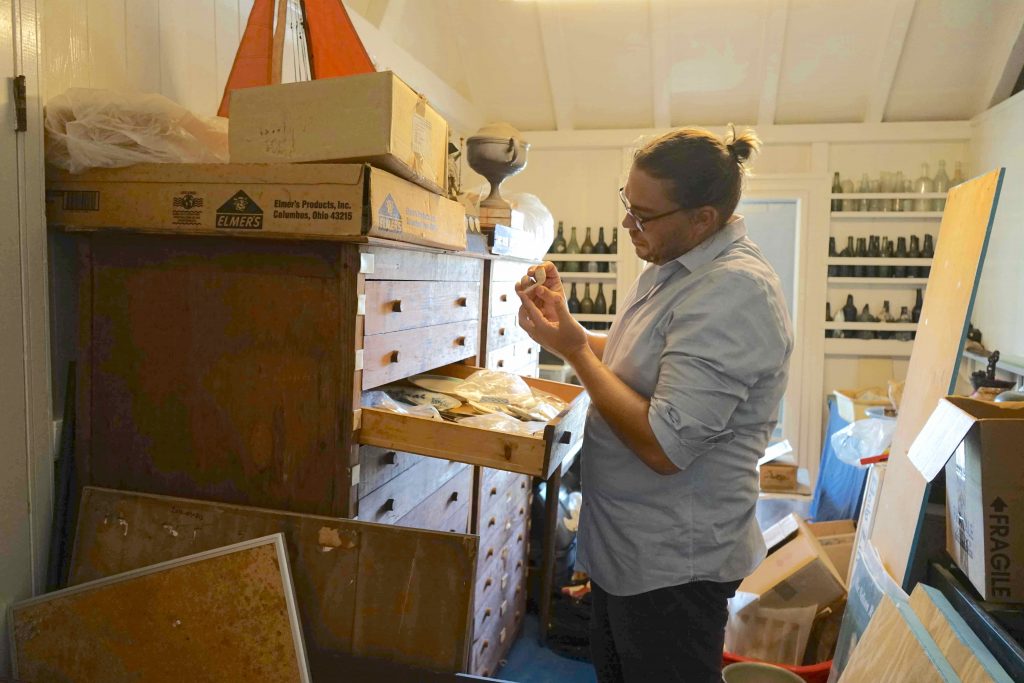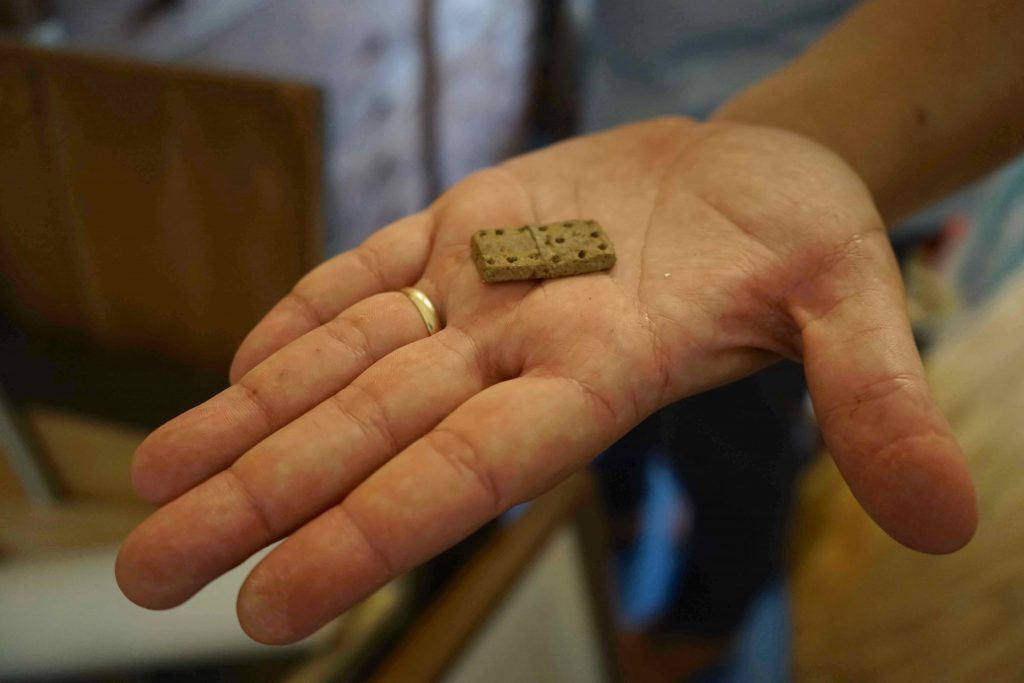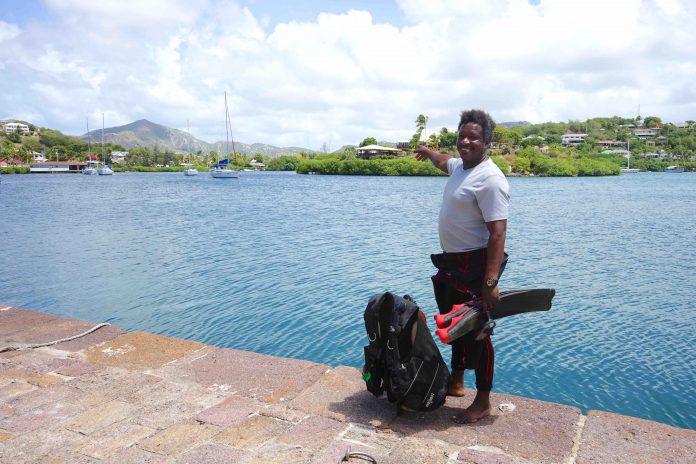
Archaeologist Dr Christopher Waters with a clay smoking pipe discovered in the dockyard 
Centuries-old artefacts found in the dockyard over the years include a lead domino 
The Antigua Naval Dockyard is the only working Georgian dockyard in the Western Hemisphere
Story and photos by Gemma Handy
The discovery of an 18th century shipwreck that had lain hidden underwater at the Antigua Naval Dockyard for more than 200 years has highlighted the need for purpose-built facilities to help preserve the nation’s historic artefacts.
The vast wooden vessel – the presence of which was confirmed by archaeologists last month – is believed to be the 1762 Beaumont, a French merchant ship later bought by a private individual, renamed the Lyon and used in the American Revolution.
It is just one of countless centuries-old relics unearthed within the confines of the only operating Georgian dockyard in the Western Hemisphere.
The country’s UNESCO representative, historian Dr Reginald Murphy, says a conservation lab is badly needed to protect them.
“Objects such as big anchors made of cast iron have been lying in the sea for hundreds of years and so that has become its normal environment.
“When you take them out and put them into another environment, you have to do all sorts of processes to preserve them,” he explains.
Dr Murphy says numerous artefacts previously found have had to be put back in the ocean in the absence of specialist facilities to prevent them from deteriorating.
“When salt water dries, it crystallises and expands the material so it starts to flake, until you’re left with a stump of what it used to be,” he tells Observer.
Chemical processes to remove the salt is a “unique area of science”, he says.
“Most museums and big archaeological companies have specialists who can restore items so that they eventually look just as good as when they were first made,” Dr Murphy continues.
He says a conservation lab in Antigua would also help ensure the nation’s precious artefacts remain in the country.
“When you find something on the bottom of the sea like a shipwreck, it ends up being taken to France or somewhere else to be conserved. It would be irresponsible not to do so; otherwise you’re sentencing it to death,” he says.
“The dockyard has lots of items on display that are falling apart that we couldn’t put back in the seabed because they’re too big.
“We have to get a unit in place to be able to do proper conservation measures – and then anything we find in the water we can restore.”
Meanwhile, archaeologists investigating the Beaumont are to spend the next few months meticulously laying out plans for the site’s management and protection.
The 40-metre naval ship was first glimpsed by local diver Maurice Belgrave several years ago when he was servicing an anchor chain.
Over the years, Belgrave has unearthed everything from 18th century tobacco pipes to live cannon balls deep in the sediment around the dockyard. He has handed each item over to the site’s museum to help researchers who are continuing to piece together the stories of the enslaved Africans who helped build the dockyard 300 years ago.
He described the shipwreck as the “best thing” he’d found in 31 years of diving.
“We have discovered so many weird and wonderful things over the years – all sorts of bullets and explosives,” Dr Murphy tells Observer.
“Even leather soles of shoes that were nailed on with little spikes of lignum vitae by some sailor who did his own repair on board the ship.”
He says there are likely hundreds more wrecks to be discovered around the twin islands.
“Barbuda has way more because of the barrier reef they have there. There was actually an active movement to attract ships onto the reef in Barbuda,” Dr Murphy explains.
“The Codringtons [plantation owners] really ran a scampish operation where they profited from the salvaging of shipwrecks.”
But anyone hoping treasure chests might be concealed among them will probably be disappointed.
“These are ships that were coming here to supply the colonies; they were bringing lumber and cargo and occasionally slaves,” the historian adds.
“Many headed off course on the way to Central America or the United States, or got blown off by a storm. There are lots and lots of shipwrecks here; we have catalogued well over 200.”

